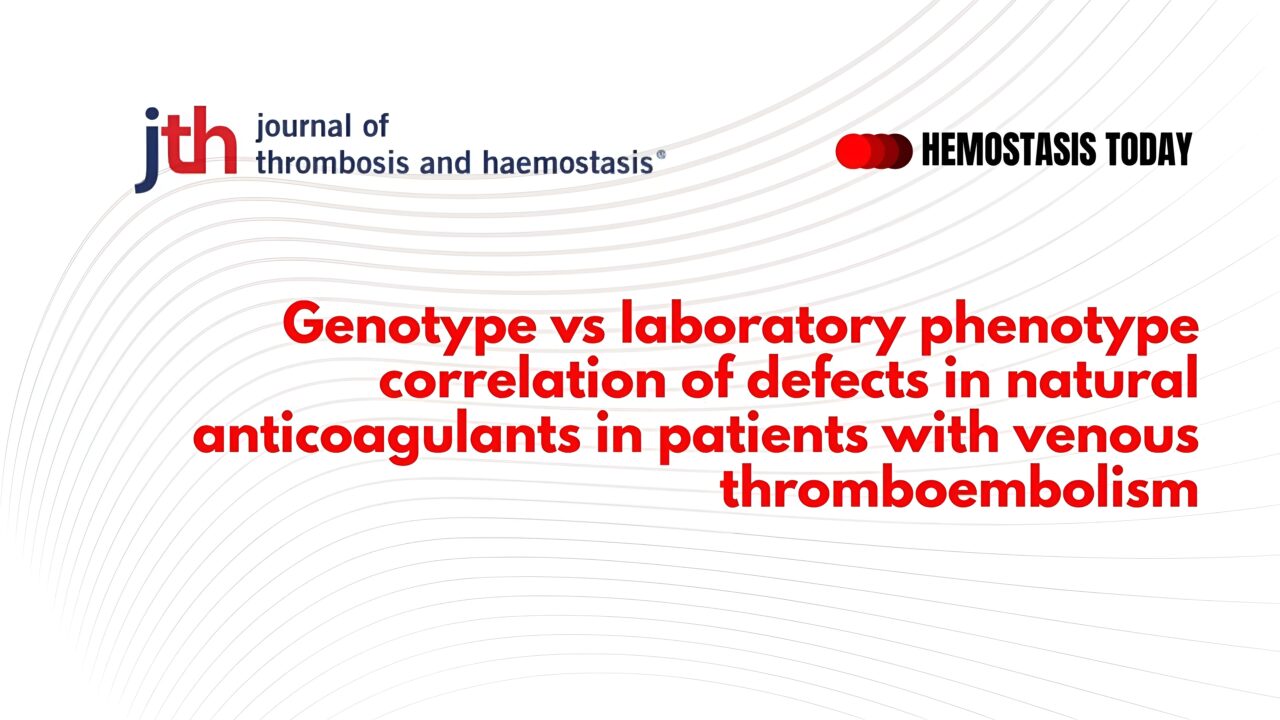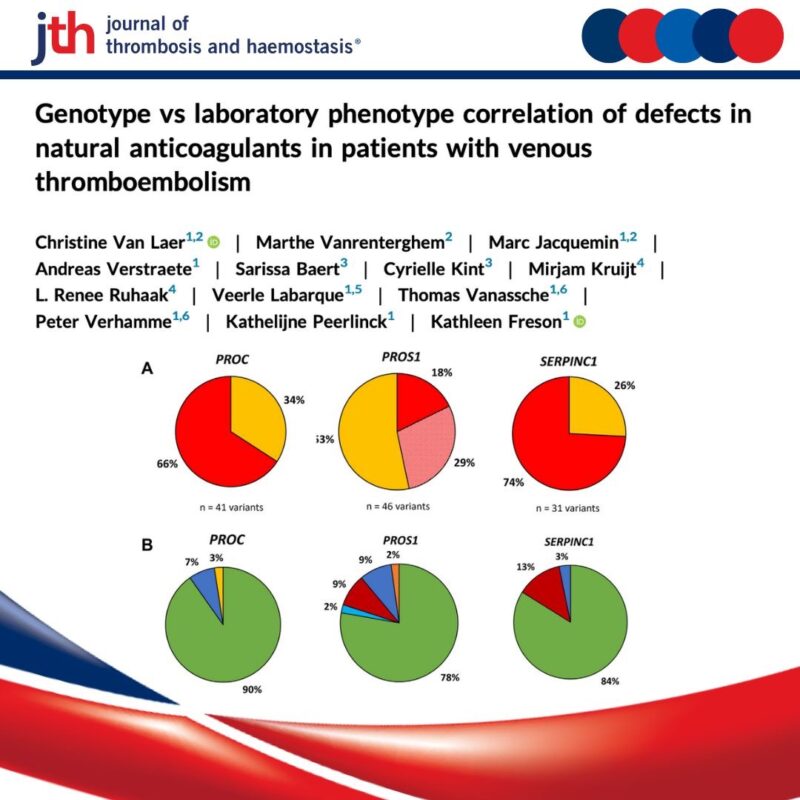
Why Do Genetic and Lab Findings Often Mismatch in VTE Anticoagulant Defect Diagnosis?
Journal of Thrombosis and Haemostasis (JTH) shared an insightful post on LinkedIn:
“Genotype vs laboratory phenotype correlation of defects in natural anticoagulants in patients with venous thromboembolism.
In VTE patients, genotype-phenotype concordance for natural anticoagulant defects is far from absolute.
This study reveals that genetic variants may present with normal plasma activity, while reduced activity can occur without detectable variants – underscoring the diagnostic limitations of relying solely on either approach.”
Read the paper here.
Article: Genotype vs laboratory phenotype correlation of defects in natural anticoagulants in patients with venous thromboembolism
Authors: Christine Van Laer, Marthe Vanrenterghem, Marc Jacquemin, Andreas Verstraete, Sarissa Baert, Cyrielle Kint, Mirjam Kruijt, Renee Ruhaak, Veerle Labarque, Thomas Vanassche, Peter Verhamme, Kathelijne peerlinck, Kathleen Freson

Stay updated with Hemostasis Today.
-
Nov 27, 2025, 16:00Nathan Connell on WFH AI Summaries from the Global Forum
-
Nov 27, 2025, 15:49Piotr Czempik: Rethinking Coagulation in Acute Liver Dysfunction
-
Nov 27, 2025, 15:35Overwhelmed? A Leader’s Guide from Mark Crowther to Getting Back on Track
-
Nov 27, 2025, 15:10Wolfgang Miesbach’s Top 10 Picks for TTP and Thrombosis from ASH 2025
-
Nov 27, 2025, 14:24ICCBBA’s Executive Director Eoin McGrath Chairs a Dynamic Session on AI, Innovation and Informatics in Transfusion Medicine
-
Nov 27, 2025, 13:26Wolfgang Miesbach’s Top 10 Picks for Bleeding Disorders from ASH 2025
-
Nov 27, 2025, 11:19Priya Prasad Presents a Case of Severe Hypotensive Transfusion Reaction
-
Nov 27, 2025, 04:07Eugene Tang Presents Highlights from UK Stroke Forum 2025
-
Nov 27, 2025, 03:47Michael Makris: I Believe the Time Has Come to Consider Emicizumab Up Front in Persons with Acquired Hemophilia
